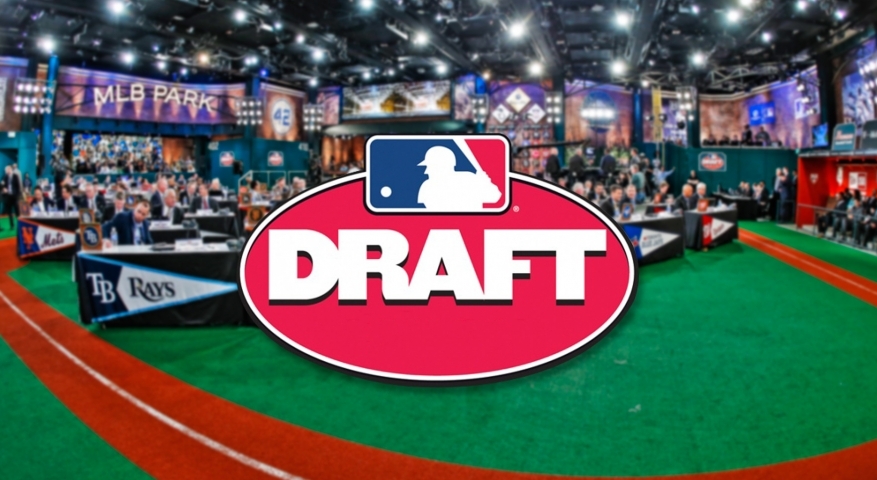
T’is the season for mock drafts!
Today we have a new Fangraphs mock draft that has the New York Mets taking University of Nevada Las Vegas Shortstop, Bryson Stott, with the 12th pick.
Stott originally went undrafted out of high school, and decided to attend the same university (UNLV) that both his mother and father attended. Since then, he’s made a bit of a name for himself. Showing good bat-to-ball skills early on, Stott was named the Mountain West Conference’s Freshman of the Year.
After an impressive sophomore year in which he hit .365/.442/.556, he was named the starting shortstop for the USA Baseball Collegiate National Team, as well as making the Mountain West Conference All-Conference Team.
Well, like with many young players, power is often the last tool to develop, and it did so for Stott. Here’s a quick look at Stott’s ISO for his three years of college:
2017: .085
2018: .191
2019: .243
The clearest difference is in what happened between his freshman and sophomore season. In his sophomore season, Stott lead all of collegiate baseball with 30 doubles. In 2019, Stott has turned some of those doubles into home runs, upping his previous total of 4 home runs in 2018 to 10 in 2019. The difference in hits that lead to extra bases was almost negligible from the two season: 40.22% in 2018 and 40.51% in 2019. What has lead to the boost in power is Stott starting to shift his lower half into his swing to drive the ball more, as opposed to slapping the the ball the other way, which was one key criticism scouts had about Stott going into this season.
At first glance, on would perhaps look at the increased strikeout rate that came with Stott’s power and be concerned. Nevertheless, it’s not high enough to be concerning, and his approach at the plate and discipline also improved. Perhaps a chart will help visual this:
| 2018 | 2019 | |
| BB% | 10.88 | 19.57 |
| K% | 6.12 | 13.88 |
| BB-K Ratio | 0.56 | 0.71 |
While Stott’s strikeout rate may have doubled, his walk rate nearly did as well. Also, his K-BB ratio improved. Sometimes, some improvements are a bit between the lines, and what we’re seeing here is that Stott has improved on a per-plate appearance ratio.
Stott is known for not getting cheated as well. Having excellent pitch recognition, he doesn’t often swing at bad pitches, and makes solid contact with the hard stuff as well as breaking pitches. Certainly separating himself as one of the more advanced college bats in this draft.
Video Courtesy of The Prospect Pipeline
One comparison that is continuously thrown around for Stott is Giants shortstop Brandon Crawford. Now Stott isn’t the defender that Brandon Crawford is, and it seems the comparison being drawn to the 6′ 3″, approximately 195-200 prospect is his body and mobility. Stott is fairly athletic, with a leaner, tall build that most expect to fill out. His size has him posting some good home to first numbers, but some scouts expect him to grow into a fringe-average runner.
Regardless, Stott is seen as someone who could stick at short due to good instincts, but if he’s forced to shift to third, it shouldn’t be an Issue. Stott has been clocked at 97 MPH throwing to first, so it’s safe to say that he does have a plus arm. To go with that plus arm, comes a solid level of accuracy. Regardless of where on the left side of the diamond he winds up at, he should fair well.
Stott is currently ranked 10th among draft prospects over at Baseball America, ninth over at MLB.com, and 8th over at Fangraphs.
Fangraphs also had the Mets taking University of Florida shortstop Brady McConnell in the second round with the 53rd pick in the draft. McConnell was originally drafted out of high school by the Cincinnati Reds but saw through his commitment with the University of Florida. Standing at 6′ 3″ 185 pounds, McConnell is a very toolsy player with plus-plus speed, and a pretty good bat.
Carrying some power at the plate (.260 ISO in 2019), he could be solid bat at a premium position whether he stays in the middle infield, or moves to center field. There are some questions about his approach and how it will translate at the next level, but his combination of a high floor, and some pretty strong hands, has his draft stock fairly high. Despite his speed, there are also some questions about his defense. Most scouts see either a move to second base or to center field.
McConnell .344/.397/.604 this season with Florida, and given that he plays in the SEC, one of the stronger conferences in college baseball, that is no small feat. Clobbering a home run about ever 14 at-bats, McConnell is showing that he can barrel up some baseballs against strong competition. McConnell would be a solid get at 53 for the Mets.
McConnell is currently ranked 59th among draft prospects over at Baseball America, 39th over at MLB.com, and 78th over at Fangraphs.
Video Courtesy of Perfect Game Baseball













